- The Fool’s New Journey Tarot – Sixty Triumphs for a New Dawn
- by John Matthews and Illustrated by Charles Newington
- Published by Schiffer / REDFeather
- Price US$34.99 / UK£31.99
- ISBN 978-0-7643-6768-7
- Reviewed by MadeInChrome
With THE FOOL’S NEW JOURNEY TAROT, author John Matthews and illustrator Charles Newington have created an intriguing reimagining of the traditional 78. So, gone are the distinguishable pips, gone are the individual courts – though the energies of some have been incorporated into the new cards – and in their place is a new archetypal journey of “Sixty Triumphs for a New Dawn.”
First conceived during the pandemic by Matthews (himself a veteran creator of over 13 decks), then designed by Newington in a style of archetypal simplicity and universal appeal, The Fool’s New Journey resets “the style and purpose of the deck … back to zero, then [takes] it to places it has never been before,” with 38 new triumphs interspersing the original 22 Majors.
Now, I’m not here to question how many cards defines a tarot deck. Considering Tarot’s history, and the number of decks out there with ‘tarot’ in the title that contain less than 78 cards (let alone the ones that have more), makes the debate somewhat redundant in my humble opinion. In short, I’m going with what the creators have done, and reviewing the deck as they intended it.
Initially, I had thought of presenting a selection of the cards as I usually do for reviews, but when I laid them out in sequence, I quickly realised that to make sense of this new journey for you, the reader, it would be best to show them all, as inevitable mental references to the Rider Waite would be made.
So, let’s make like The Fool, full of promise and blue sky thinking, and jump right in!
The first decade charts the formative years of self-discovery through guidance. Navigating The Maze (of life) as The Believer recalls aspects of The Magician, just as coming face to face with The Shadow does the same for The Priestess, both of whom are also included as separate entities in this sequence. Split out, too, is The Hierophant, across Cards 6 and 9, from what we are taught to what we learn for ourselves.
From exploring the wonder within, we move to exploring the wonder without with new card Beauty, which in the eyes of the beholder leads naturally to The Lovers, echoing the acceptance of and the surrender to another’s perspective of the Hanged Man, who now comes later.
But then – and this is the first of a few quibbles – an abrupt shift to The Wasteland at #13, a nod to the Death card clearly, but with no preparation or run-up to it of any kind.
The 2nd decade then expands on the discovery of and relationship with The Other to the theme of opposition and notions of right and wrong. Justice, with scales for eyes, a nice play on the words “the scales fell from one’s eyes”, also takes the form of The Prisoner and the scapegoated or traitorous Hanged Man. Then from such sacrifice comes the release with The Escape, the wisdom attained and retreat of The Hermit, coming to rest in The Sleep, a renaming of the 4 of Swords.
And so from Sleep to The Dreamer and Strength in the 3rd decade, where apart from the physical benefits of rest, our dreams give us courage. I like the juxtaposition of The Fisherman and The Teacher, together recalling the old adage about teaching a man to fish. And on the subject of making a living, The Worker, who calls to mind the 7 and 8 of Pentacles.
Here, we also move to personal trials after conflict with others and ‘the system’ in the 2nd decade. Note The Wheel of Fortune, and the subsequent confusion it can bring with Chaos, which exhibits the stresses associated with the 9 and 10 of Swords, and the 5 and 7 of Wands. A less frightening Death logically follows, with The Sorrowful putting a face to the 3 of Swords, while destruction is split into its external and internal aspects as The Tower and The Downfall.
In the 4th decade, The Downfall comes before The Devil, not after; an interesting take, suggesting how failure and disaster can bring out the worst in some, just as it can call us to question – why me?
With the talking cure of The Questioner we gain Hope, through which we learn to forgive and forget with Forgetting and its dove of peace. Then the surprise of Remembering, the rising Phoenix of rebirth, which, together with the childlike joy of The Merry, echoes the 6 of Cups.
Temperance teaches us to moderate our ups and downs, to find that sweet spot, the right mix from which we are able to Divine the Truth, and so completes this sequence.
In the 5th decade, The Fool encounters a relation in The Clown, clearly channelling the Yin/Yang nature of the trickster, and pops up again, spirits lifted, in the Nature card. And yet, uncertainty is never far away, and as The Lost, the Fool is found wandering past too many doorways, spoilt for choice or in search of purpose, which he finds through the self-reflection and soul searching of Judgement.
In this decade, we also find The Moon, The Sun and The Star in this order, about our place in time and space. I like the triptych of The Listeners, History and The Observer, conveying the passing down of tradition, notions of ancestry, and a sense of our place in the flow of history. The History card here recalls the generational legacy of the 10 of Pentacles, and is an apt segue into the 6th and final decade…
… And back to the primeval beginning of beginnings with The Ocean – the origin of all life, and the essential element for it to exist. Another juxtaposition of interest is The Road and Wisdom – note the differences in the paths travelled. The road to Wisdom passes through Fear – a jarring image – rooted in The Past, in order to move forwards to the Future. It is with such Healing do we achieve the completion of the familiar World.
But it doesn’t end there, for with the final addition of Eternity, there is more to the World. The Fool becomes part of the larger whole that is boundless, timeless, and with the familiar lemniscate, the never-ending flow of energy. The World may take us to the next chapter, but it is the Eternity card, all encompassing, where the possibilities are truly endless.
Now onto the guidebook, which is fab! At a chunky 247 pages, it’s packed with in-depth card meanings and interpretations, 2 tales that contextualise the cards, and, of course, guidance on how to work with the deck, with sample readings and spreads to get you on your way. In short, it really puts the ‘guide’ in guidebook!
So, I tried a reading, which I found easy enough. Using the Fool as a significator, I pulled 3 cards: Card 51 The Ocean (U), Card 33 The Questioner (R) and Card 46 The Lost (R). Here is a lovely image of The Fool leaping into the unfathomable waters of the Ocean – a much needed tonic for our troubled times. The reversed Questioner, though, asks what are we on the fence about, what fresh lines of inquiry and avenues of thinking are we refusing to acknowledge or engage with? It could also mean, coming after The Ocean, the acceptance of what is, the ebb and flow, the cyclical nature of things, compared to which our own concerns are trivial and petty. The sense of peace that comes with that acceptance is the 3rd card where the reverse of ‘lost’ is ‘found’, discovery and clarity of the bigger picture – back to the ocean – and the knowledge of who you are, where you’re going, and what you seek. Stripped of the traditional Renaissance symbolism, the cards make for an easier, more meaningful, if less mystical, reading.
Another major plus for me is the packaging: a stiff-enough cardboard sleeve that you slide off, to reveal a dark blue, sturdy, well-made magnetic clip box with a shiny cloud design. Inside, fits the book printed in colour, and the cards themselves in a good quality tuck box that you can slip in a pocket or a small handbag. The cards have a good slippy gloss finish (some such finishes can stick the cards together, that’s not the case here), a nice feel, and are a little thicker than most.
But – and here is where I pick up with the quibbles – the cards are not much bigger than playing cards, and as I have big hands, shuffling is a tad difficult.
Also, what’s with the thick white border? Considering the size of the cards as mentioned earlier, it only serves to reduce the image even further. Ditching it in favour of the drawn gold frame would have been more aesthetically pleasing. Perhaps an amendment for the next edition along with bigger cards?
As for the card backs, the design verges on a cartoon when compared to the earthy childlike simplicity of the art style.
And again on the subject of the artwork, in terms of inclusivity, the style makes it difficult to determine if there is any, which, for a deck that purports to be “for a new dawn” in a post-pandemic world, is a bit of a shame.
Nevertheless, on the whole, I like the deck, and would highly recommend it to all readers and collectors, especially those who don’t believe the Tarot has to have 78 cards as a minimum. Plus, with its expanded and relatable field of archetypes, it would suit any occasion for beginners and advanced readers alike.
Full credit to John Matthews and Charles Newington for demonstrating with The Fool’s New Journey Tarot that the journey of the Fool – indeed of any Fool – is but one of many archetypal journeys in life.
The Fool’s New Journey Tarot: Sixty Triumphs for a New Dawn by John Matthews and Charles Newington was published in March 2024 by REDFeather Mind, Body, Spirit, an imprint of Schiffer Publishing Ltd, and is currently available for purchase from https://schifferbooks.com/products/the-fools-new-journey-tarot, and Amazon.

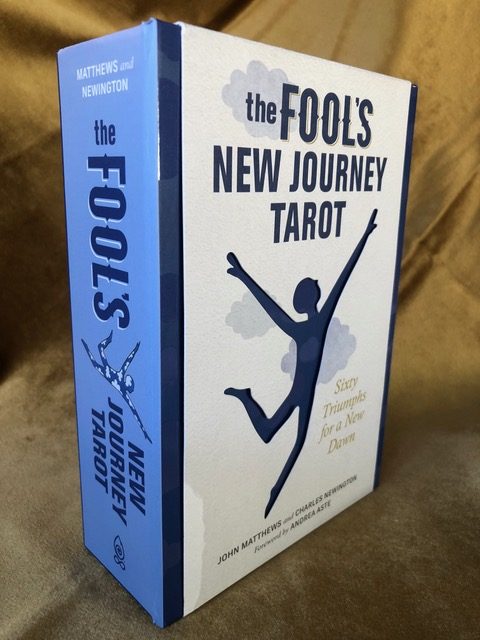
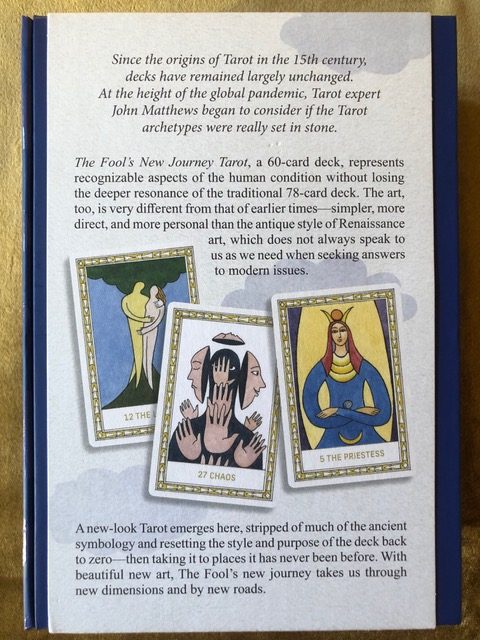
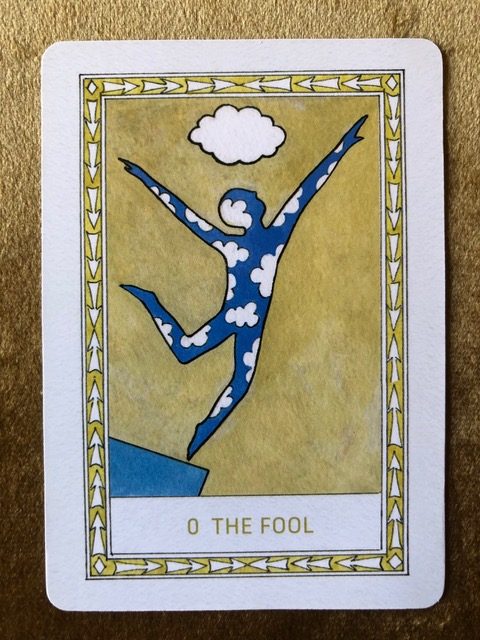
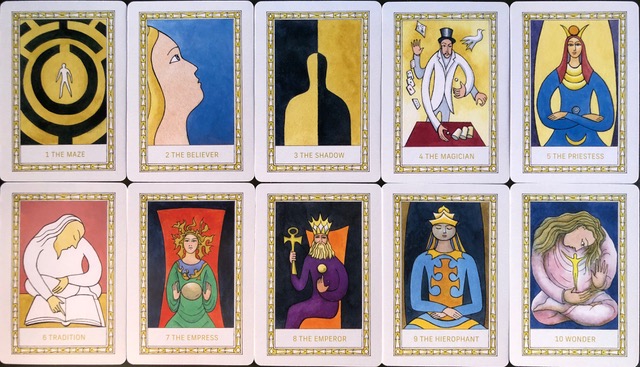
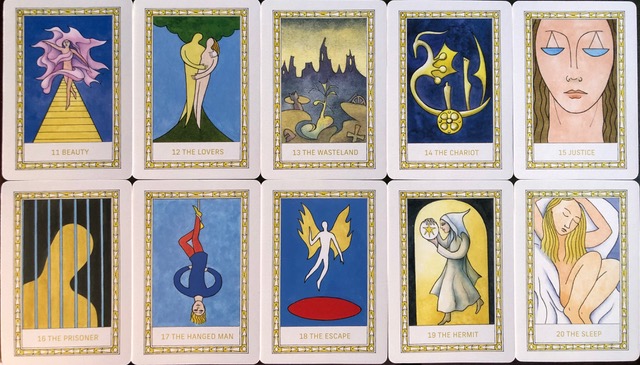
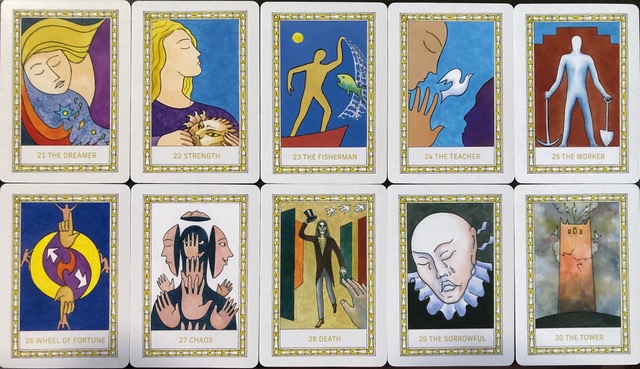
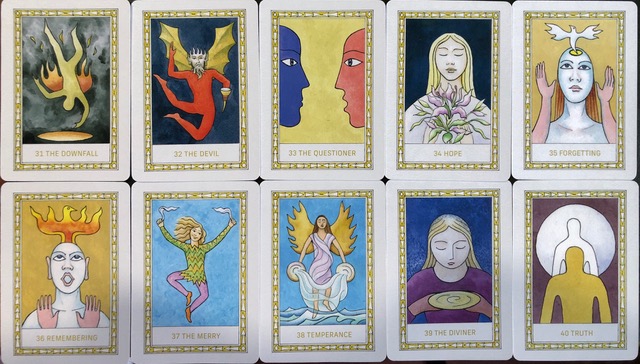
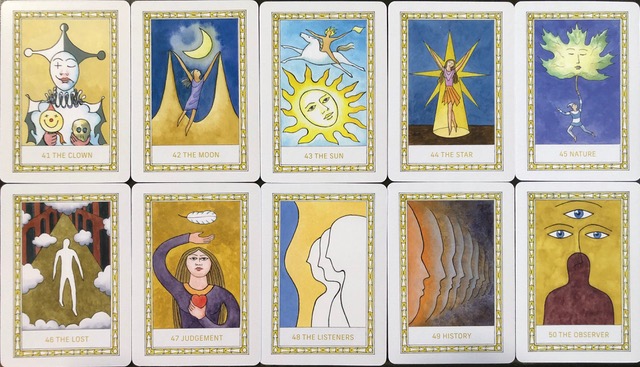
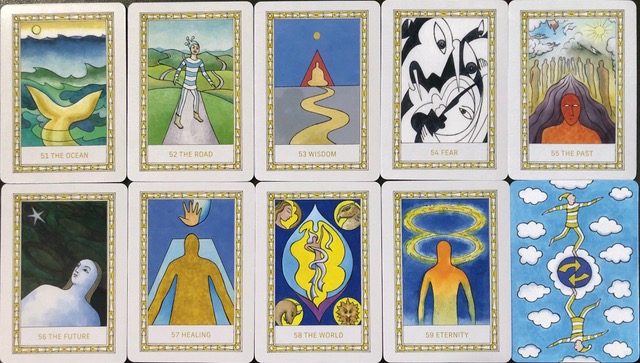
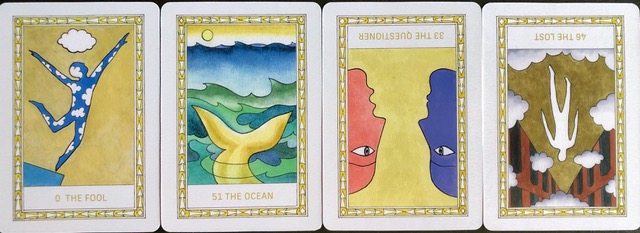
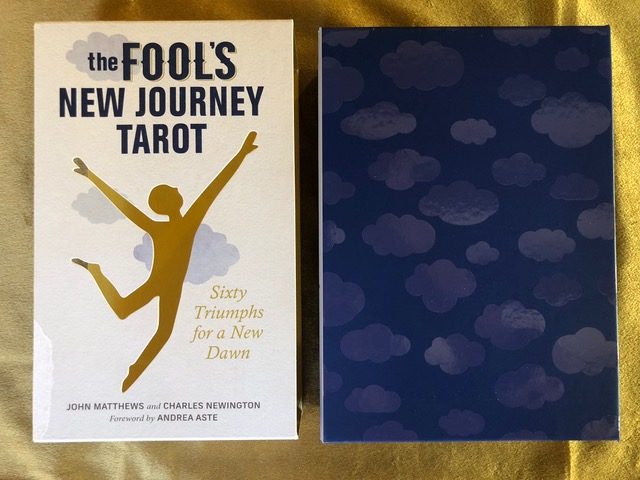
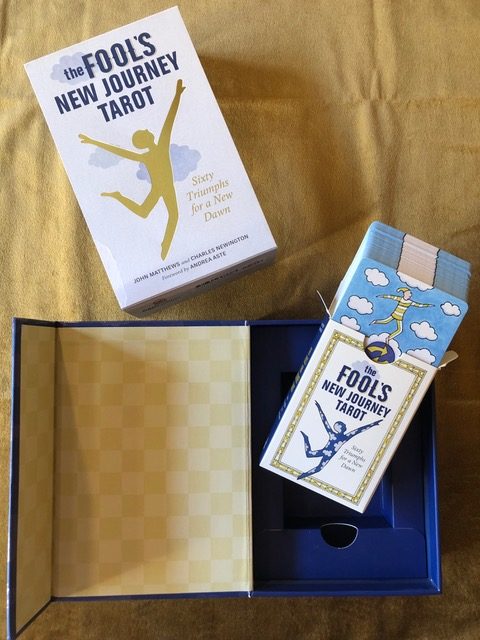
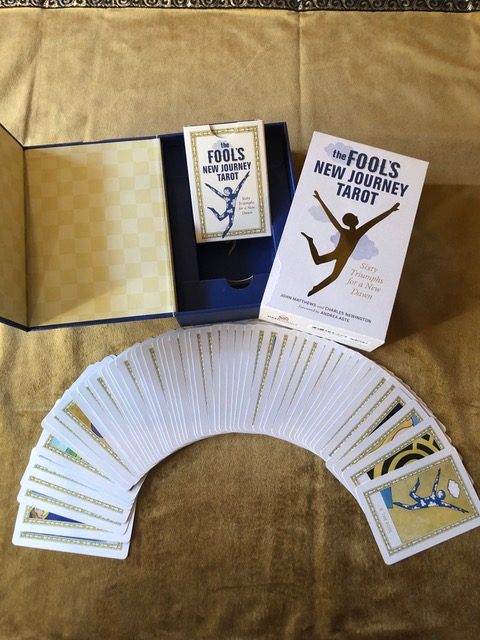




0 Comments